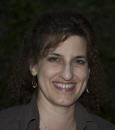 Ask a dozen Americans across demographics to comment on public education and there is likely to be general agreement: the system needs help.
Ask a dozen Americans across demographics to comment on public education and there is likely to be general agreement: the system needs help.Unfortunately, as with most issues, the problem is easier to define than the solution. How does one fix it? And whose responsibility is it? Government has poured astronomical sums into the education system without securing long-term successful change, and those within the community who don't have school-age children sometimes forget that other people's children may someday be making decisions that affect their retirement. Political and social bickering can erect roadblocks to change that seem impossible for traditional schools to overcome—and even if the roadblocks come down, school officials may have no idea where to begin to implement effective change.
Occasionally, however, a group of innovative educators arrives in a community and offers a viable alternative to the status quo. It's fairly obvious when this has happened: ecstatic parents whisk their children out of failing traditionally-modeled schools and stampede to the new alternative.
To the immense relief of many local parents, one such group of innovators landed on Pasadena's doorstep early in 2007. The public school system in this small California city had been plagued for decades with socio-economic divisions and a sub-standard reputation, but when Kate Bean arrived on the scene with her experienced educational design team, a reason to hope was born. Bean's new school, which opened in the fall of 2007, is not only innovative in teaching methods, but also in aspiration: to create an environment where children will grow "intellectually, physically, and socially" with a heavy emphasis on developing a sense of community responsibility, healthy living and leadership skills. As a free charter school within the Pasadena Unified School District, Aveson was envisioned as a K-12 learning community where each age group could contribute in the education of the whole.
It seemed to be perfect timing. Initial enrollment coincided with another significant and positive change: the replacement of the district's school superintendent. According to the Pasadena Weekly, there was every reason to hope that the groundwork was being laid for significant change—even though the replacement, Edwin Diaz, was being asked to "deal with the legacy of one of the worst administrations in local public school history."
Wisely, Diaz seemed to have no intention of operating as a maverick. He approached the challenge with a team spirit: "Any improvement is going to be a community wide effort." Diaz told the L.A. Times. "This is not the type of situation where you can go in in isolation and begin implementing things you think will have an effect on student performance. We have to reach out to stakeholders and get them involved as much as possible."
Many of those stakeholders have been thriving at Aveson for nearly two years now, an important part of the community-wide effort Diaz envisioned: often real change must be preceded by successful individual experiments that can be emulated on a larger scale. In Pasadena, at least, Aveson seems to be one such success.




No comments:
Post a Comment